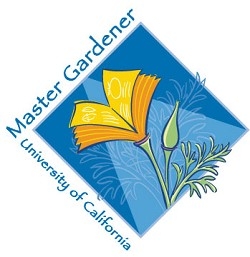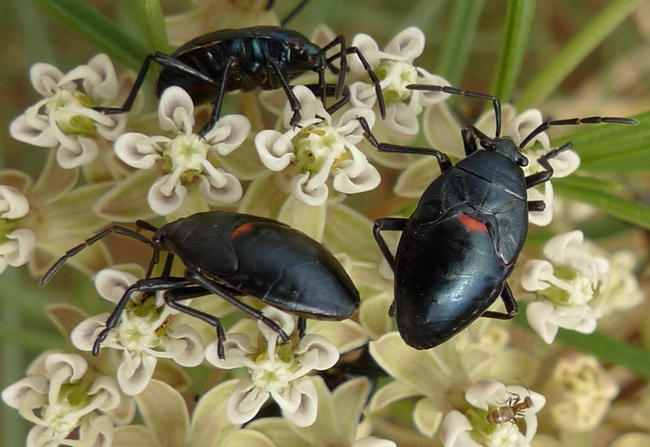UC Blogs
Lemony Goodness
My lemon verbena (Aloysia triphylla) shrub is planted near a window and has a very strong lemon scent when you brush by it or when the wind blows (here in Fairfield, which is most of the time.) If the window is open the lemon scent comes into the room.
The shrub is pruned to about 6 feet , I try to keep it to 5-6 feet tall and about 2 feet wide, if I did not keep it at the height it would grow to about 8 feet. In lemon verbena’s native country of South America, it can grow to 15 feet tall. If you let them get too tall and wide they tend to get very messy looking. This shrub is planted where it gets only the late afternoon sun, but the Sunset Western Garden Book says they need full sun.
They do like a lot of water and good drainage to keep them looking their best. I have not seen any pest on my shrub, but they can be bothered by whitefly and spider mites. Spraying with an insecticidal soap will help with that problem.
In the spring and early summer, it has small white flowers on the end of the branches. Even after the flowers fade the left-over flower inflorescences are interesting to look at. This shrub goes dormant in the winter, and that is when it gets it heavy pruning. I take it down to about 2 feet above the ground, knowing it will come back stronger the next year, so far this 8 year old shrub has not failed that test.
I bring some of the branches, with the flowers, into the house put them in a vase with other flowers if I have them. If not, I just use the lemon verbena stems in the vase helps to release the lemon fragrance into the room. They will last about a week this way.
This is a very easy plant to propagate. Doing it in summer with a soft wood cutting and putting into potting soil, should bring new starts in about 2 months.
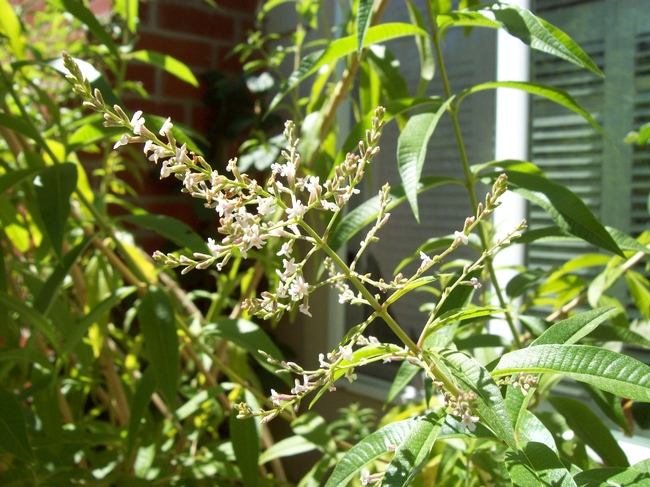
Lemon verbena flowers. (photos by Betty Victor)
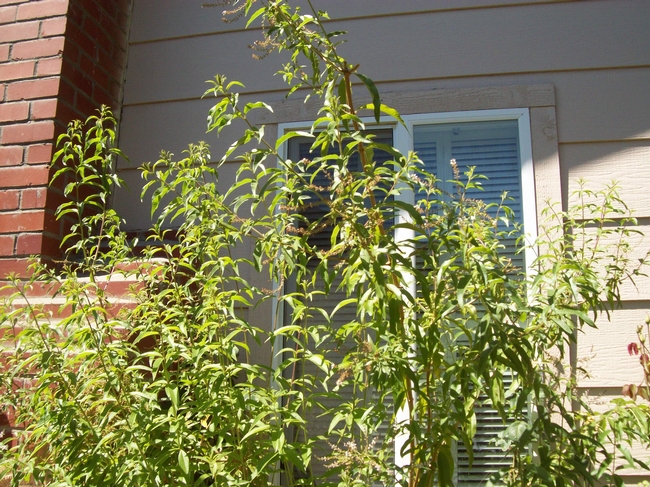
Lemon verbena plant.
Is There a Better Camouflage Than This?
Robbin Thorp saw it first. Talk about an eagle eye. Thorp, a native pollinator specialist and emeritus professor of entomology at the University of...
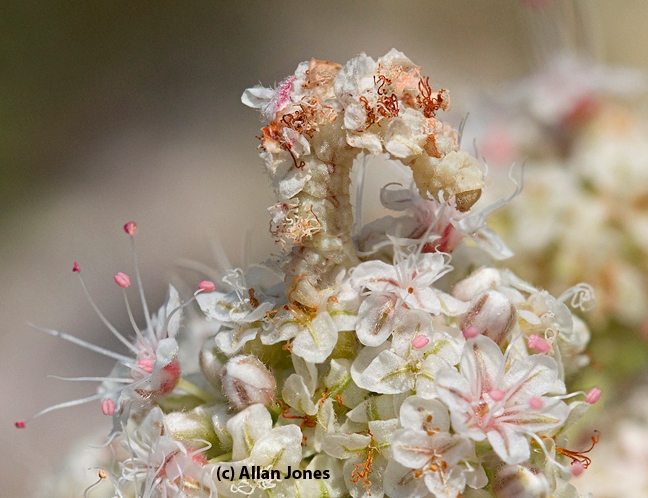
Larva of an emerald moth, Synchlora, disguised in florets. (Photo by Allan Jones)
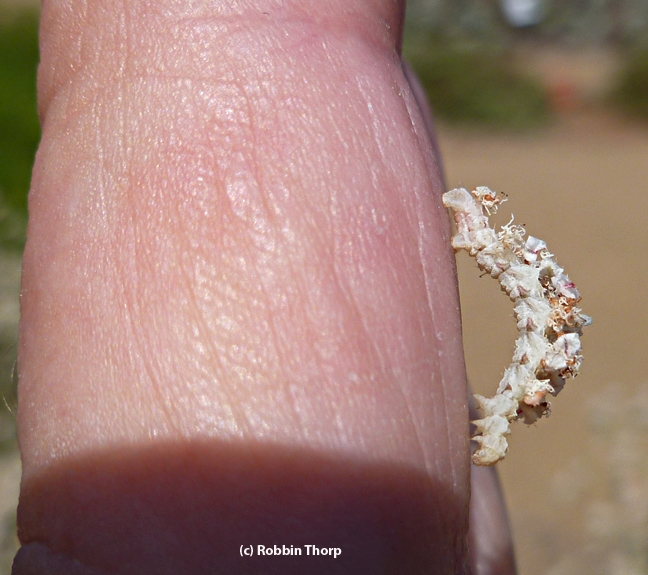
Larva of an emerald moth, Synchlora, on Robbin Thorp's finger. (Photo by Robbin Thorp)
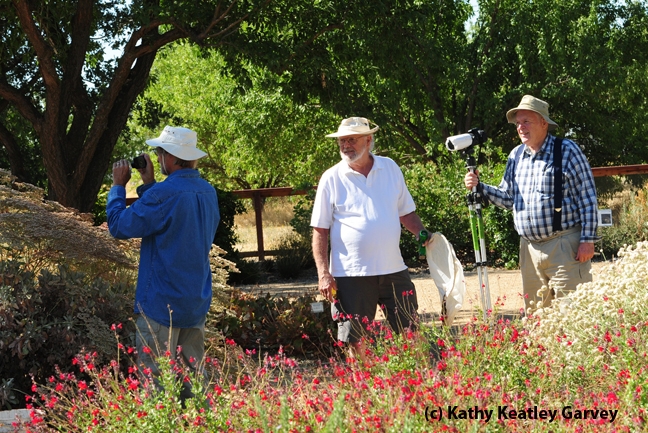
Davis photographer Gary Zamzow (far left); native pollinator specialist Robbin Thorp (center), emeritus professor of entomology at UC Davis, and Davis photographer Allan Jones in the Haagen-Dazs Honey Bee Haven. (Photo by Kathy Keatley Garvey)
UC nutrition education helps San Diego residents fight fat
How much sugar is in a can of soda? Is an instant noodle cup a healthy lunch? The answers are in a video produced by San Diego County News Center that featured a nutrition presentation by UC Cooperative Extension nutrition educator Shirley Salado. Salado is part of EFNEP - the Expanded Food and Nutrition Education Program.
UCCE has hosted EFNEP in San Diego County for nearly 40 years, educating underserved, low-income populations on making healthy food and fitness choices for themselves and their children.
See the video here:
UC Master Gardener part of a new farm-to-table trend in L.A.
UC Master Gardener Geri Miller is making a living by tending a "bespoke garden" in Los Angeles, said an article on Forbes.com. The new trend is part garden, part urban farm and part farmers market.
Miller and her husband have built 8-by-4-foot raised beds in a previously vacant lot and are using a bio-intensive planting process to enable high production in little space. Beds for home chefs, which go for $327 per month, are sold out. Beds for restaurants, priced at about $427 per month, are still available.
With the bespoke garden, the renters have something to say about the plants that are grown, but they don't have to do the work. One chef, for example, wanted unusual tiny purple and white eggplants. Another chef requested ice lettuce, frilly mustard greens and sweeter baby collards.
Miller plans to build more bespoke gardeners in L.A.
“We’re aiming to be near high-minded kitchens in neighborhoods willing to eat the best produce they can find,” Miller said. “We want to turn vacant lots into places where you can eat nutritiously and deliciously.”
The UC Cooperative Extension Master Gardener program in Los Angeles trains volunteers to to help residents of underserved communities learn how to grow their own food. Master Gardeners go through intensive gardening training that emphasizes organic production of vegetables, fruits, trees and flowers. The volunteers also get training from UC experts on soils, composting, fertilization, irrigation, pests, diseases, weeds and harvesting.
No need to spray when bordered plant bugs appear in the garden
In recent weeks, Master Gardener hotlines and UC Cooperative Extension offices in the Central Sierra foothills have been bombarded with the question, “What is this bug? They're all over my strawberries!” Samples have arrived in jars and bags, with the sample insects in “living and breathing” condition and also in a decidedly “squished” state.
The identification of all these various insects is the same. It is the bordered plant bug (Largus succinctus or Largus sp.) The adult is pretty easy to identify, but the immature nymphs can sometimes be a bit more difficult, as they don’t look anything like the adults. The nymphs (immature stage) lack fully developed wings. Their color is metalic blue/black with an orange, warning triangle at center.
Bordered plant bugs feed using piercing-sucking mouthparts and are classified as true bugs, order Heteroptera. As such, their food consists entirely of liquid extracted from plant tissues. Their feeding is concentrated on the most nutritious parts of plants such as flowers and fruit. In most cases no control is needed as the insects often move on late in the summer and don’t cause significant harm to ornamental plants. In the food garden, the insects can cause damage by scarring developing fruits, such as strawberries and blueberries. In this case, hand removal is easy by knocking insects into a mason jar, vacuuming them up using a shop vac, or stepping on them. No chemical control is recommended.
If you would like to read more about bordered plant bugs, see the UC Statewide Integrated Pest Management Program's pest note on box elder bugs. Although not the same insect, they are similar and the biology and control are similar
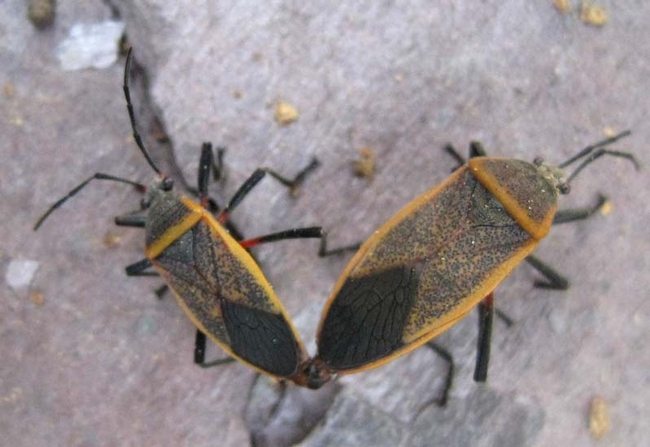
Adult bordered plant bugs.
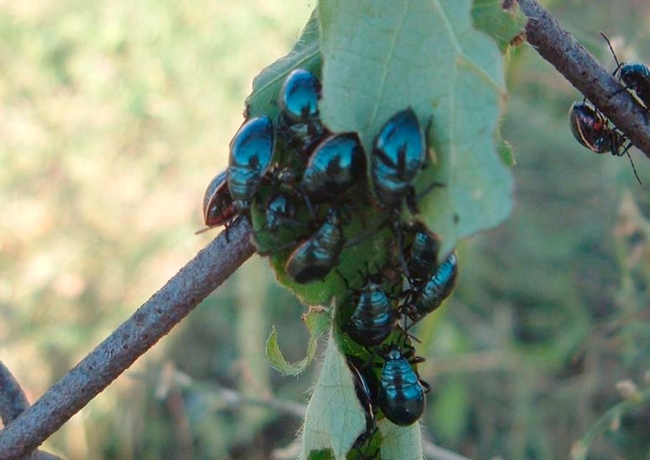
Very early "instar" or baby form of bordered plant bugs


